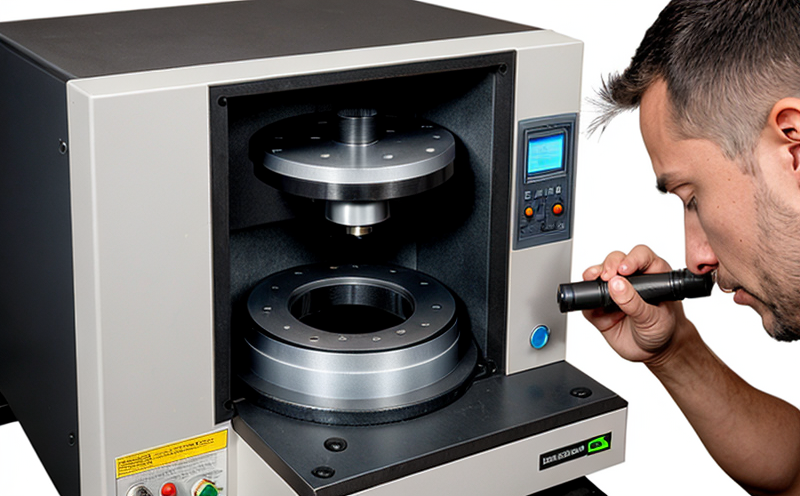ISO 1024 Microstructure Characterization of Steels
The ISO 1024 standard is a cornerstone in the metallurgical industry, providing precise methods for microstructural characterization. This service ensures that steels meet stringent quality and performance standards by analyzing their microstructure through advanced optical microscopy techniques.
Understanding the microstructure of steel is paramount in ensuring its mechanical properties align with design requirements. The microstructure of a metal significantly influences its strength, ductility, toughness, and other critical attributes. By employing ISO 1024, laboratories can provide comprehensive insights into the internal structure of steels, which is essential for quality control and compliance.
The process involves several steps: specimen preparation, mounting on a metallographic mount, polishing, etching, and final examination under a light microscope. The resulting images are highly detailed and reveal critical information about grain size, phase distribution, and other microstructural features. This service is particularly valuable for quality assurance teams, R&D engineers, and compliance officers who need to verify that the steel meets specified standards.
The ISO 1024 standard ensures consistent and reproducible results across different laboratories by providing detailed guidelines on specimen preparation and examination techniques. This method is widely used in industries such as aerospace, automotive, construction, and manufacturing, where high-quality materials are critical for safety and performance.
One of the key aspects of this service is its ability to detect microstructural changes that could indicate potential issues or deviations from standard specifications. Early detection of these issues can prevent costly rework and ensure that products meet regulatory requirements. The detailed reports generated by this service provide critical data for quality assurance teams, helping them make informed decisions about material acceptance.
The ISO 1024 standard is complemented by advanced optical microscopy equipment, ensuring accurate and reliable results. This process involves several steps: initial examination with a low-power objective to get an overview of the microstructure, followed by higher magnification for detailed analysis. The use of etching solutions can enhance contrast, making it easier to identify different phases in the steel.
The service also includes quantitative evaluation of grain size using standard methods such as the ASTM E112 or ISO 6414. This allows for a precise measurement of the average grain size, which is crucial in assessing the mechanical properties of the material. Additionally, phase identification and mapping are conducted to ensure that all phases present in the steel meet specified requirements.
The detailed reports generated by this service provide critical data for quality assurance teams, helping them make informed decisions about material acceptance. These reports include high-resolution images, quantitative analysis, and a comprehensive summary of the findings. This information is invaluable for R&D engineers who are developing new materials or optimizing existing processes.
Customer satisfaction with ISO 1024 microstructure characterization services is high due to the accuracy and reliability of the results. The use of advanced optical microscopy ensures that even the smallest details are captured, providing a clear picture of the material's internal structure. This level of detail allows for precise evaluation of the microstructure, ensuring compliance with industry standards.
| Step | Description |
|---|---|
| Specimen Preparation | The process involves mounting the sample on a metallographic mount, polishing to achieve a smooth surface, and etching for contrast enhancement. |
| Examination | Microstructural examination is performed using an optical microscope with various magnifications to capture detailed images of the microstructure. |
| Quantitative Evaluation | The grain size is measured and phases are identified and mapped, providing a comprehensive analysis of the material's internal structure. |
Why It Matters
The microstructure of steel plays a crucial role in determining its mechanical properties. By ensuring that the microstructure meets specified standards, this service helps prevent defects and ensures product quality. This is particularly important in high-stress applications where even minor deviations could lead to catastrophic failures.
Compliance with industry standards is essential for maintaining a good reputation among customers and regulators. The ISO 1024 standard provides a robust framework for ensuring that the microstructure of steel meets stringent quality requirements. This service not only helps in meeting these standards but also ensures consistent performance across different batches or suppliers.
For R&D teams, this service offers valuable insights into material behavior and can guide process optimization efforts. By understanding how changes in processing conditions affect the microstructure, engineers can develop more efficient and reliable manufacturing processes. This leads to innovations that improve product quality and reduce costs.
The ability to detect early signs of potential issues is another significant benefit of this service. In industries where safety and reliability are paramount, such as aerospace and automotive, early detection of defects can prevent costly recalls and ensure compliance with stringent regulations.
Scope and Methodology
- Specimen Preparation: Mounting the sample on a metallographic mount, polishing to achieve a smooth surface, and etching for contrast enhancement.
- Examination: Microstructural examination is performed using an optical microscope with various magnifications to capture detailed images of the microstructure.
- Quantitative Evaluation: The grain size is measured and phases are identified and mapped, providing a comprehensive analysis of the material's internal structure.





